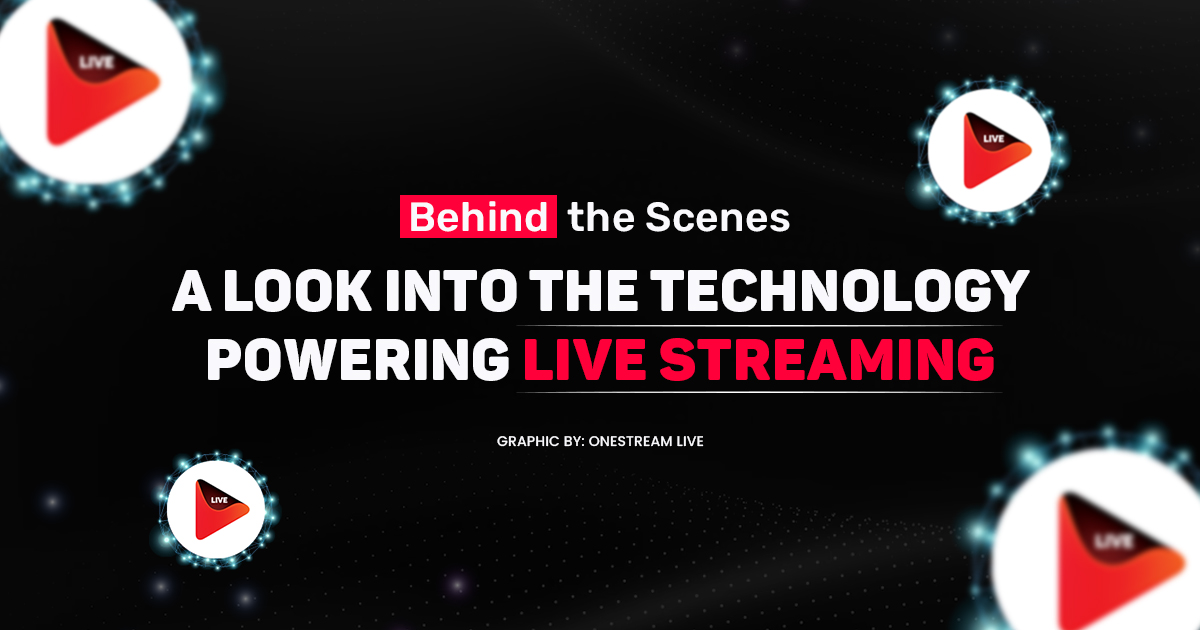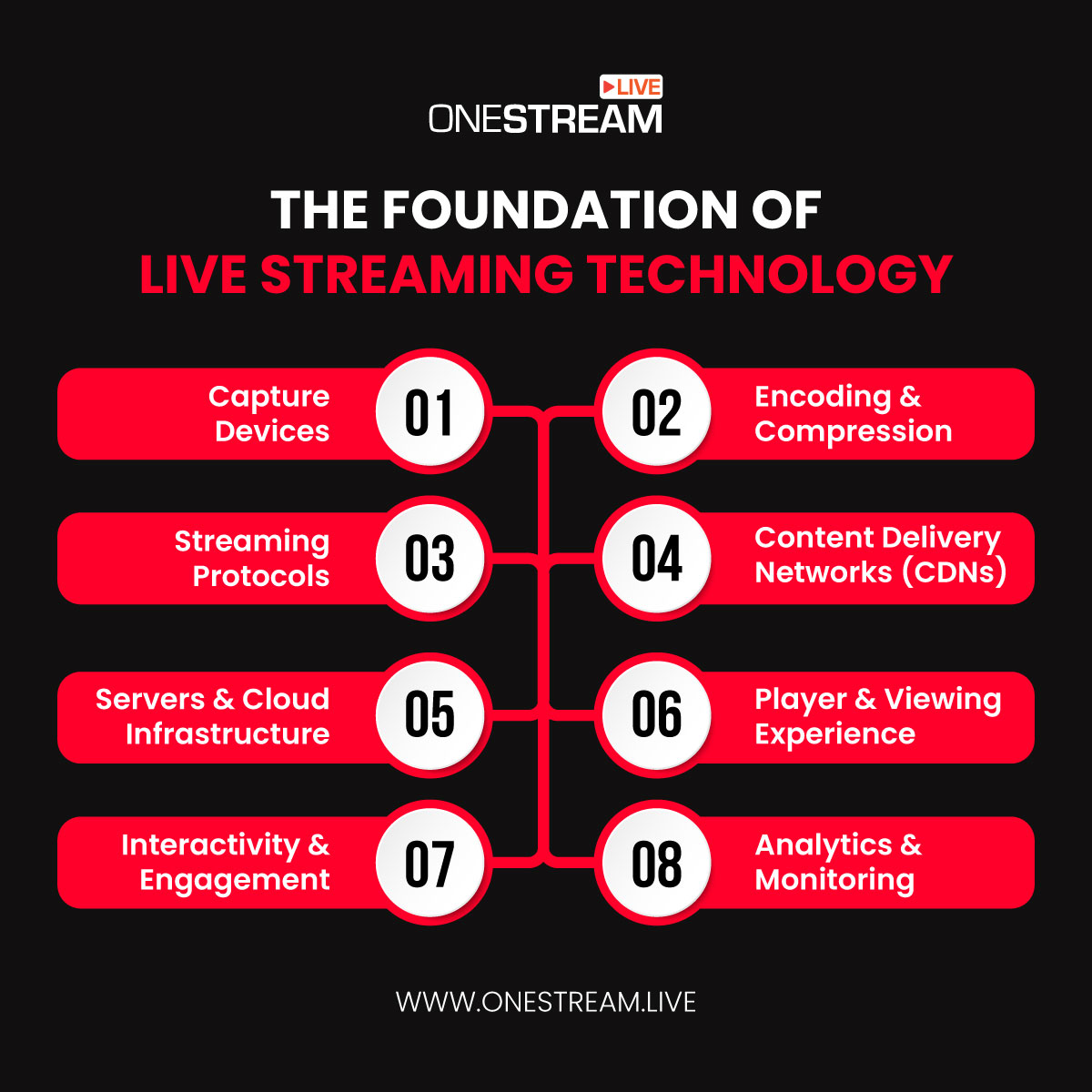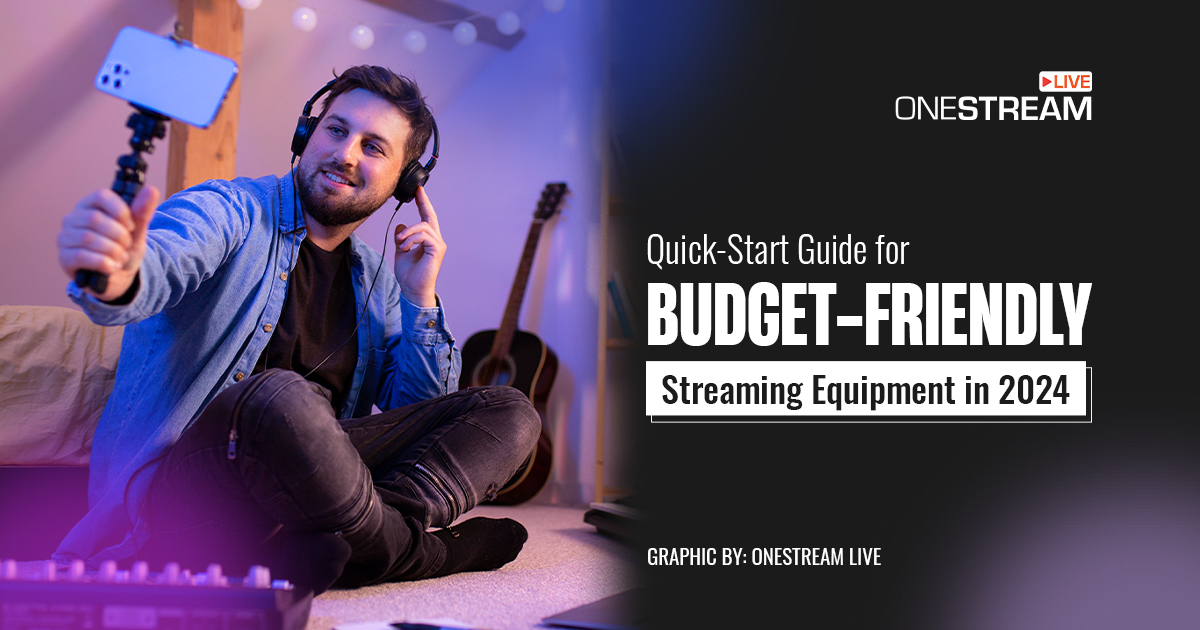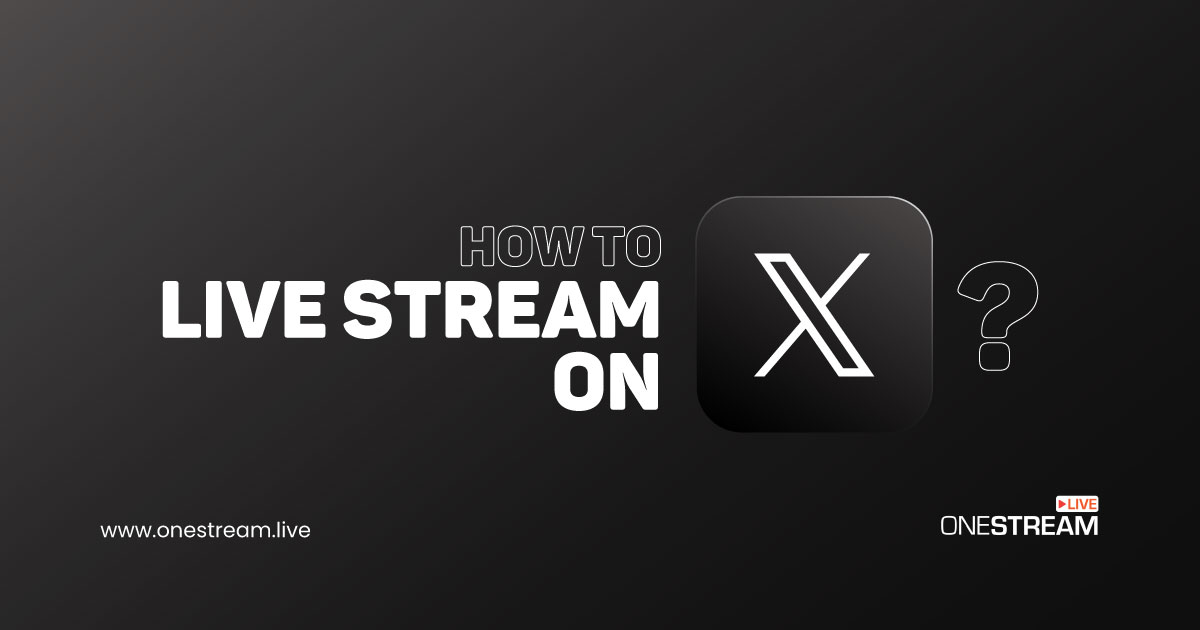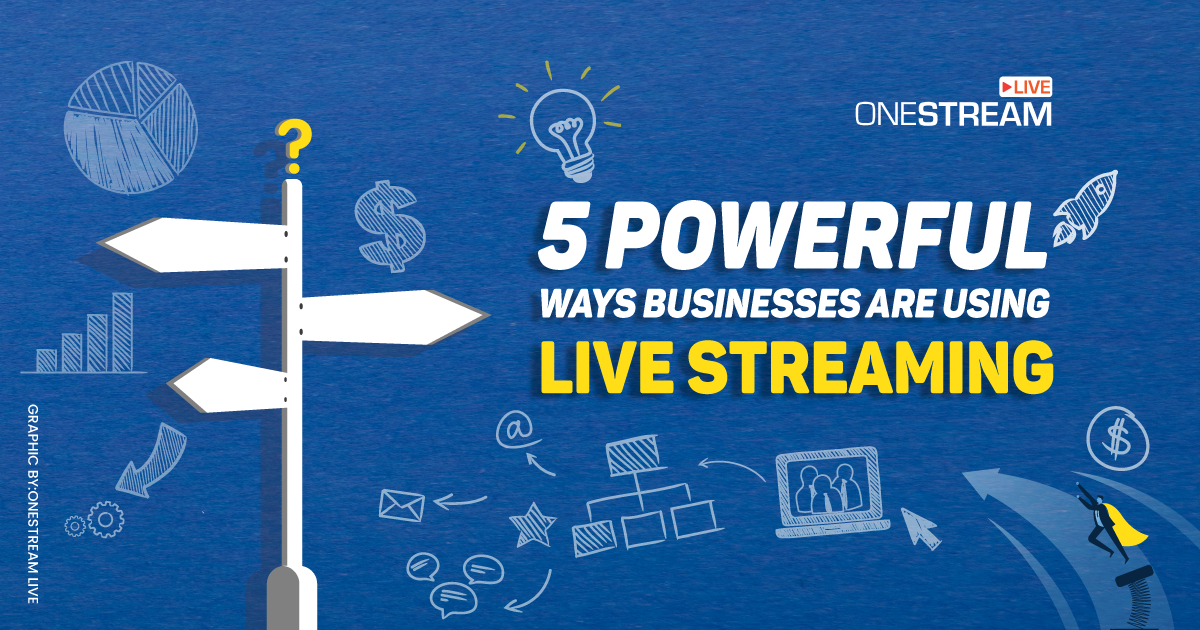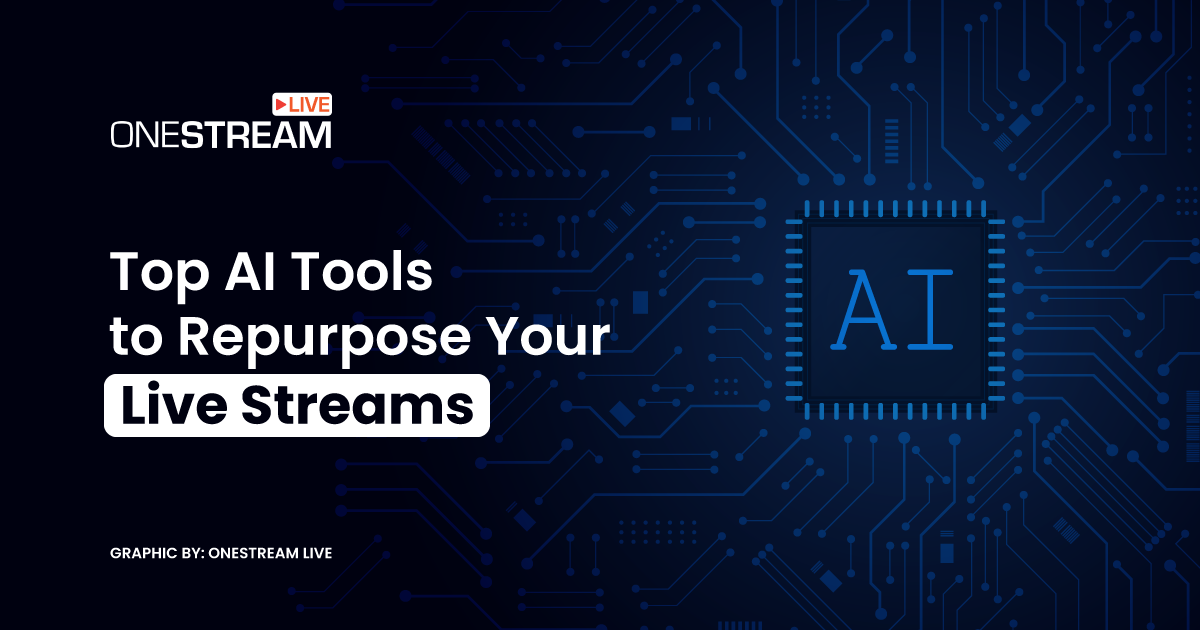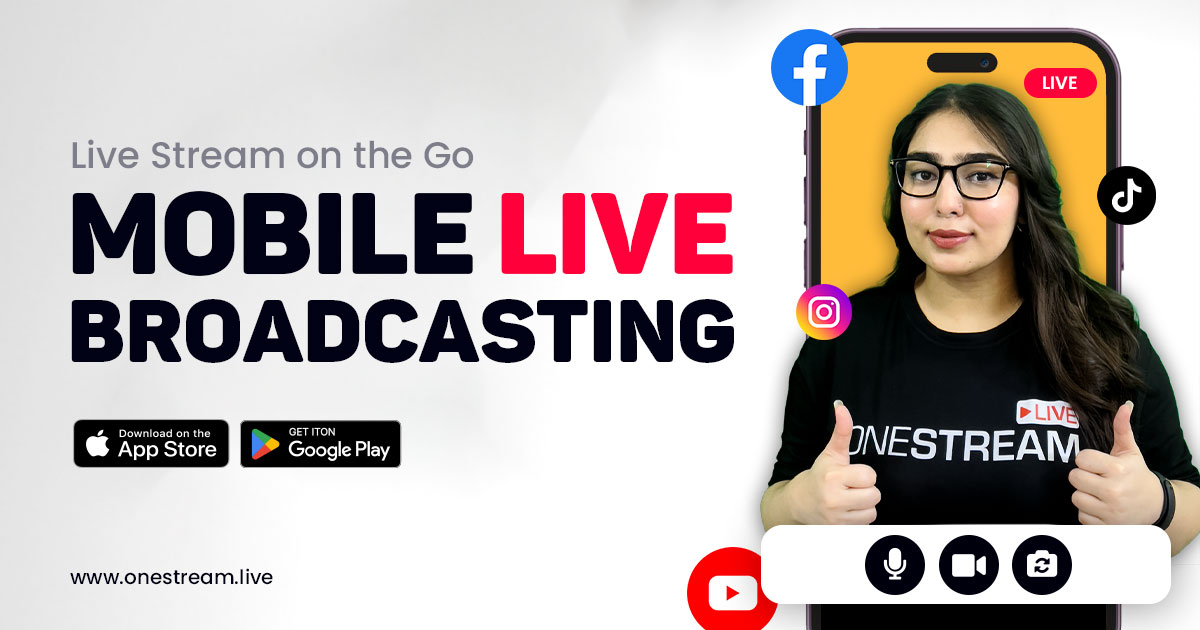From thrilling sports events to live concert performances, live streaming technology allows you to connect with the action in real time, no matter where you are. This technology connects fans with their favorite events and will enable businesses and content creators to engage with global audiences more interactively than ever before.
In this Article:
So, how about we say goodbye to missing out and hello to unparalleled access to live internet broadcasting? Let’s start our journey behind the curtain, where we uncover the sophisticated streaming tech and live streaming infrastructure that makes it all possible.
The Foundation of Live Streaming Technology
1. Capture Devices
Cameras and Microphones
Embark on an exhilarating journey with high-definition cameras and top-of-the-line microphones, a staple in live streaming technology. Capture every detail in stunning clarity and crystal-clear sound, perfect for your live video stream.
Choose from professional 4K or 8K cameras for live streaming broadcast quality, webcams, and smartphone cameras for a casual approach. There is a range of microphones, from high-end studio mics to convenient built-ins.
Encoders
Advanced encoders transform raw video and audio into optimized digital formats for seamless streaming tech. Choose between hardware-based encoders for unmatched reliability and speed or software-based encoders for versatility and affordability in your live streaming infrastructure.
Hardware encoders deliver exceptional performance for professionals, while software encoders provide a seamless user experience for individual streamers, offering excellent value.
2. Encoding and Compression
Video Codecs
The next step in video streaming technology is encoding the captured video into a format that can be efficiently transmitted over the internet. Video codecs like H.264, H.265 (HEVC), and VP9 play a pivotal role here.
These codecs compress the video data, significantly reducing the file size while maintaining visual quality, essential for high-quality live streaming technology. H.264 is the most widely used codec due to its balance of quality and compression efficiency, but H.265 is gaining popularity for its improved performance.
Audio Codecs
Similarly, audio codecs such as AAC (Advanced Audio Coding) and Opus compress audio data. These codecs ensure that the audio remains clear and in sync with the video while minimizing the amount of data that needs to be transmitted, a critical component in live streaming technology.
AAC is a streaming standard that offers high-quality audio at lower bitrates, while Opus is known for its versatility and efficiency.
3. Streaming Protocols
RTMP (Real-Time Messaging Protocol)
RTMP is a robust protocol that transmits audio, video, and data from the encoder to a server. Despite its age, RTMP remains a cornerstone of live streaming technology due to its low latency and reliability.
However, it’s often used as an intermediate step rather than the final delivery protocol.
HLS (HTTP Live Streaming)
Developed by Apple, HLS is a protocol that segments the video stream into small chunks delivered over HTTP. This segmentation allows HLS to adapt to varying network conditions, providing a smooth viewing experience even on slower connections.
HLS is widely supported across devices, making it a popular choice for live streaming broadcast platforms.
DASH (Dynamic Adaptive Streaming over HTTP)
DASH is an alternative to HLS that segments video streams for adaptive bitrate streaming. It adjusts dynamic video quality based on real-time network performance, ensuring uninterrupted playback.
DASH is codec-agnostic, providing flexibility in choosing the appropriate video and audio codecs for a stream.
4. Content Delivery Networks (CDNs)
A Content Delivery Network (CDN) is a geographically distributed server network that caches and delivers content to users based on location. CDNs are crucial for live streaming technology as they reduce latency, prevent bottlenecks, and improve user experience.
By serving content from the nearest server, CDNs ensure fast data transfer and help manage large-scale live events without overloading the central server.
5. Servers and Cloud Infrastructure
Origin Servers
The live video stream initially lands on the origin server after being encoded. This server handles the stream before distributing it to the CDN.
It manages the primary stream, ensuring it is correctly formatted and ready for delivery, a crucial part of the live streaming infrastructure.
Edge Servers
Edge servers, pivotal in enhancing the live streaming technology, are located closer to the end users and cache the content to facilitate quicker delivery. Reducing the distance data must travel minimizes latency and significantly improves the live streaming broadcast experience.
They also balance the load by distributing user requests across multiple servers, ensuring efficient data management.
Cloud Services
Many live streaming platforms leverage cloud services to enhance scalability and reliability. Cloud infrastructure is adept at handling spikes in viewership by dynamically allocating resources.
This elasticity ensures that the streaming service remains stable and performs well, crucial for delivering uninterrupted live streaming technology no matter the number of concurrent viewers.
6. Player and Viewing Experience
Media Players
The end-users access live streams through media players embedded in websites or standalone applications. These players must support various streaming protocols and codecs to ensure compatibility and smooth playback.
Popular media players include HTML5, which is widely supported across modern browsers, and specialized applications like VLC Media Player for more advanced users.
Adaptive Bitrate Streaming
Adaptive bitrate streaming, an important component of live streaming technology, adjusts the quality of a video stream in real time based on the viewer’s internet connection. This method prevents buffering and ensures the best possible viewing experience.
If the connection speed drops, the stream’s bitrate is lowered to maintain smooth playback. Conversely, if the connection improves, the bitrate increases to enhance video quality.
7. Interactivity and Engagement
Chat and Comments
Live streaming is not just about passive viewing; it involves active engagement. Real-time chat and comment features allow viewers to interact with each other and the content creator.
This interaction fosters a sense of community and increases viewer retention.
Overlays and Graphics
Visual overlays and graphics, such as scoreboards, lower thirds, and notifications, enhance the viewing experience by providing additional context and information.
These elements are often integrated into the stream using software like OBS Studio or professional-grade tools in live streaming broadcast environments.
8. Analytics and Monitoring
Analytics
Live streaming platforms provide detailed analytics on viewer behavior, stream performance, and engagement metrics. These insights help content creators understand their audience and optimize their streams for better reach and interaction.
Metrics such as viewer count, watch time, and engagement rates are critical for assessing the success of a live stream.
Monitoring Tools
Continuous stream monitoring is essential to ensure high quality and immediate response to any issues. Monitoring tools track various aspects of the stream, including latency, buffering, and downtime.
They alert the technical team to problems, allowing for quick troubleshooting and minimal disruption to the viewer experience.
Final Words
Experience the power of live streaming technology, revolutionizing engagement and connection. Cutting-edge streaming tech ensures flawless video and audio delivery, combining advanced encoding, streaming protocols, and CDNs.
Embrace the future of immersive, interactive experiences, overcoming latency and network congestion challenges. OneStream Live leads the industry with innovative solutions for effortless live streaming broadcast across multiple platforms, expanding your reach with minimal effort.
Say goodbye to streaming hassles with OneStream Live. Explore the capabilities of OneStream Live and elevate your live video stream experience today!
OneStream Live is a cloud-based live streaming solution to create, schedule, and multistream professional-looking live streams across 45+ social media platforms and the web simultaneously. For content-related queries and feedback, write to us at [email protected]. You’re also welcome to Write for Us!

